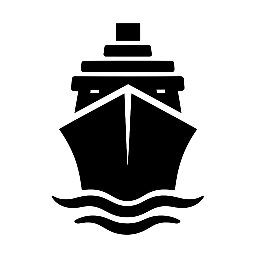I recently watched the Netflix documentary about the infamous “Poop Cruise” — a one-hour retelling of the 2013 Carnival Triumph incident that drifted into cruise infamy thanks to an engine fire, a power failure, and yes… plumbing problems.
Now, let’s be clear: it wasn’t a good time. But the documentary plays it like a borderline apocalypse. Lots of murky brown water shots. Lots of grim commentary. And some truly over-the-top passenger interviews that made it sound like people were seconds away from eating each other.
The funniest part — unintentionally, of course — was the visual of people using the shower as a toilet “for number one” while the emergency light on their life vest blinked like a rave party. If you’ve ever wondered what it’s like to pee during an EDM concert in a broom closet, now you know.
But you know what’s more important than the drama? What it actually means for you — especially if you’re thinking about taking a cruise in 2025 or beyond.
First, Let’s Talk About the Ship
The Carnival Triumph debuted in 1999 — which in cruise ship years is basically the Paleozoic era. If your mental image of modern cruising is based on that ship, you might as well base your idea of air travel on a DC-9 with ashtrays in the seats.
Cruise ships have evolved massively in the last two decades. Today’s ships — especially those sailing from U.S. ports — are bigger, smarter, safer, and full of features that didn’t exist when Y2K was a real concern.
So, What’s Changed Since Then?
Let’s skip the drama and focus on how ships have improved since the Triumph mess:
- Redundant power systems: Modern ships have multiple layers of backup generators, so even if one system fails, toilets, A/C, and food service can keep running.
- Smarter layouts: Ships are now designed to handle emergencies better — with upgraded ventilation, better waste systems, and more advanced fire suppression.
- Faster response and communication: Cruise lines learned how not to communicate during a crisis from this very incident. Now, response plans are tight and messaging is clear.
- Fewer old ships: Most cruise lines have retired their older vessels or refurbished them heavily. In fact, post-COVID, the industry accelerated its fleet refresh big-time.
Why You’re Fine (and Better Than Fine) Now
If you’re cruising from the U.S. — especially on MSC Cruises — you’re in great shape. MSC’s ships in this market are some of the newest on the water, with all the bells, whistles, and safety tech you could want:
- Modern design with high-efficiency systems
- Top-tier emergency power setups
- Better plumbing (praise be)
- And yeah, much nicer cabins, entertainment, and food too
There are only a handful of companies that actually build cruise ships, so when one ship has a very public failure, the entire industry takes notes fast. It’s not like airplanes, where a 25-year-old model is still in service — cruise ships get retired, stretched, or overhauled constantly.
So… Should You Still Cruise?
Absolutely. If the “Poop Cruise” is the only thing keeping you from booking a trip, let it go. That was 2013. The ship was from 1999. And cruise technology has come a long way since then.
No one wants to be stuck without plumbing. But if you pick a modern ship — and again, MSC’s fleet is a great place to start — you’re going to be just fine. Scratch that. You’re going to be in a hot tub with a mojito by 4 p.m. on embarkation day, wondering what people were so worried about.
Cruising today isn’t just safer — it’s smarter, smoother, and, thankfully, way less… brown.


Leave a Reply